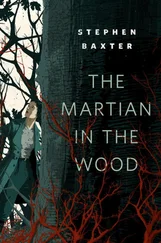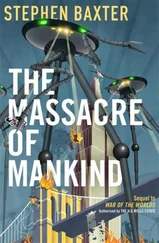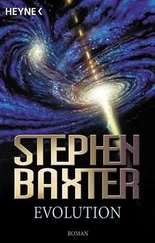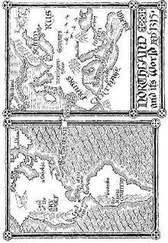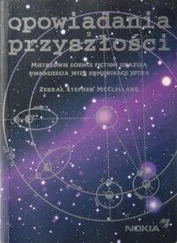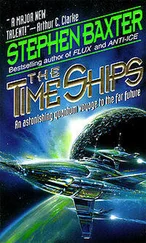Many people instinctively recoil from such drastic tinkering with the planet. It feels hubristic, arrogant. In our myths only the gods fooled around with the weather, like the deities in Homer’s Odyssey who created storms to blow Odysseus around the Aegean Sea. And the science is definitely uncertain. As I said, Lovelock’s “Gaia” hypothesis depicts the Earth as a complex web of interlocking feedback processes. Until we understand how this web works it’s hard to be sure if our meddling will make things better, or worse. There is even a danger that a geoengineering solution would actually encourage us to continue to commit our biospheric sins in the mistaken belief that we could clear things up later.
However, there is plenty of serious talk about geoengineering. In 2009 Britain’s prestigious Royal Society produced a major report on the “science, governance and uncertainty” of geoengineering, and in 2011 the idea was debated by the highly influential Intergovernmental Panel on Climate Change (IPCC), the UN’s climate science body.
Your optimism in our ability to handle something like geoengineering might be dented if you read some of the fractious arguments being waged today in public forums about climate change, but at least we are talking. Perhaps even the arguments are a sign of a (slowly) emerging global consciousness, of how we’re groping towards becoming a mature planetary civilisation. Certainly if things deteriorate there might come a point where we have no choice but to try drastic solutions.
But perhaps, in the end, if things got bad enough, a new and shocking paradigm would emerge: let it die .
With enough power and raw materials I suppose it would be possible for mankind, or a large chunk of it, to survive even on a world with little or no ecology left at all. It might be like colonising an alien world, with domes over the cities, and gigantic air-scrubbing machines, and food factories churning out processed blue-green algae. The tremendous energies that had been devoted to failed geoengineering efforts could now be devoted to artificial life-support systems for a planet.
I wouldn’t underestimate what it would take to replace the lost “services” of the ecology. Consider the humble tree, for example—the tree, so central to the Na’vi’s culture and lifestyle. Trees prevent land erosion, they provide a weather-sheltered ecosystem in and under their foliage, they help maintain the atmosphere by producing oxygen and reducing carbon dioxide, they provide crops from apples to rubber—and, when they die, they give us a remarkably flexible building material, in wood. There are thought to be some four hundred billion of these giant servants on the planet (see Chapter 29). We would have to spend some serious money to build mechanical equivalents of all that. (And if we did, perhaps the last trees would end up in a tree museum, as in the Joni Mitchell song.)
How would it be to live on such a world? The fragmentary visions in Avatar give us a hint. There have been all-city planets in science fiction, such as in Isaac Asimov’s 1954 novel The Caves of Steel , which depicted a world of claustrophobic metal-walled corridors. And consider the dismal dead-Earth vision of Cormac McCarthy’s novel The Road .
I imagine a world of vast mines and huge engines, of foul, smog-choked air and dead oceans, where every sip of water and breath of air has to be passed through a filter first. (Maybe the exopacks used on Pandora are based on technology developed to survive on Earth.) I imagine a world still flaring with war over its remaining resources, just as in Avatar . I imagine a world of intense control and surveillance, mediated by the super-powerful artificial minds of the future (see Chapter 19). I imagine a planet like a vast shanty town, where the plight of the poor and the vulnerable would be dreadful.
And we would miss mother Earth badly. Already we are disconnected from the ecology that nurtured us, and don’t fit the world around us. Our brains are still hardwired to avoid long extinct predators, which is why our bodies are flooded with adrenaline in response to everyday hassles, as if they were lethal threats. This is the “pronghorn principle.” The pronghorn is a North American antelope-like creature that runs ridiculously fast, a now useless ability it evolved to flee the vanished predators that once hunted it. We would be desperately unhappy on a dead Earth, and we might not even understand why.
For better or worse however this does seem to be the sort of world into which Jake Sully was born—and a sense of what we’d have lost is dramatised in Jake’s first wondrous reaction to the living world of Pandora. But our world isn’t like this yet.
We always have to be aware that Avatar is a movie, and what we see onscreen is there primarily to serve a narrative purpose. Avatar is a movie of hopeful awakenings, from Jake Sully emerging from cryosleep (suspended animation) in orbit around a new world, to the movie’s very last frame when he makes a final wakening as a Na’vi, fully committed to his new world. But hopeful awakenings are much more effective, for story purposes, if you have a nightmare to wake up from.
There’s nothing new in dark portrayals of the future. My generation, born in the fifties, was brought up with the Cold War, a mind-numbing stalemate that could have triggered a mass nuclear war: a future terminated by a wall of blinding light. Western culture has a deep-rooted expectation of apocalypse just around the corner that seems to date back at least as far as the Book of Revelation. We’re always fearing the worst; it’s just that the worst we can imagine changes with time.
Perhaps apocalyptic thinking is valuable, in some circumstances. Maybe our habitual pessimism about the future is a kind of folk memory, a grandmother instinct warning us not to be complacent, to make us expectant of drastic future change, as we have experienced change in the past (such as the Ice Ages). None of this minimises the real threat posed by such problems as climate change. But a recognition of our habit of apocalyptic thinking casts a clearer perspective on our hopes and fears.
And as regards the near future, maybe we’ve still got time to avert the green apocalypse.
I doubt we really could kill off our “mother.” I’m lucky enough to live in a rural community in the north of England. Looking out of my window as I write I can see “nature”: hills, a river, forests, fields. But in fact almost everything I see save for the basic shape of the landscape is artificial, made that way by human intervention, and almost all of it is less than two centuries old. The green I see is mostly crops, or grass for the sheep, or the pine trees of the managed forests. But the wild creatures persist, at the edges: in the hedgerows, underground, at the coast, in the river valleys, the birds in the air.
It’s the same even in the heart of our greatest cities. The city of Pripyat was built to house nuclear workers from Chernobyl, and was abandoned after the disaster. After just a couple of decades its open spaces were green, and the paving stones were so smashed and lifted by tree roots they looked as if they had been through an earthquake.
Gaia has proven pretty resilient in the face of mega-disasters such as the impact of asteroids, like the one that knocked out the dinosaurs sixty-five million years ago. The daddy of all extinction events, the “end-Permian” catastrophe possibly triggered by eruptions in Siberia a quarter of a billion years ago, nearly ended multicelled life on Earth altogether. But life, though much depleted, made it even through the end-Permian, and the grand story of recovery and evolution began again.
Читать дальше
